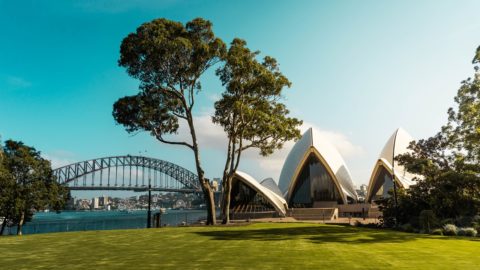The Sydney Opera House might have “sustainability in its DNA” but there is still a huge energy bill to take care of every year. Now with a new power purchase agreement that energy bill will be both stabilised and renewable. And that’s just the start of its new sustainability profile.
The World Heritage listed building’s single use plastic footprint next on its sustainability hitlist.
Meanwhile the building will source its “well-known power profile” from large scale wind and solar projects in NSW, the Sapphire wind farm and the Bomen solar farm, both currently under construction.
According to Energetics, the corporate PPA mechanism is a market developing at a “remarkable pace”.
The Sydney Opera House deal was negotiated by renewable energy retailer Flow Power and will see the building invest its annual $2.4 million electricity spend in sourcing power from renewable power projects – a total investment of more than $16 million over the next seven years, with options to extend.
According to the head of the building, Ian Cashen, it’s a running joke that solar panels or wind turbines can’t be put on the roof, so the PPA is a way the precinct can virtually meet its energy needs without fossil fuels.
Cashen says the building’s leadership team “recognise ourselves as wanting and needing to be a leader in sustainability.
“The Opera House is associated with the performing arts and is a monument in itself: people use the word ‘iconic’ a lot.
“We want the Opera House to be a reflection of Australian society, and I feel strongly that sustainability is important for Australians.”
The tourism industry has typically lagged on sustainability despite its responsibility for 8 per cent of global greenhouse gas emissions but Cashen says strong support for green initiatives from the leadership team has helped the Opera House buck the trend.
He says the chief executive officer, Louise Herron, is “not anyone who would supress an idea for being too difficult.
“We give people a bit of freedom to explore these ideas.”
Even the PPA was something that probably wouldn’t have come about without a green light to explore it as a viable option.
“I think people don’t have the time to do that, or there is this kind of automatic hurdle that it seems to be too difficult.
“It’s important to show that we can make it work, we need to show them how we did it.”
Energy supply agreement coming to an end is a good time to think renewable
From a point of practicality, the building’s traditional energy supply agreement was coming to an end, which created an opportunity to do some research and market analysis on a renewable PPA.
They found that the financial case for a long term renewable PPA – for seven years, with options to extend – stacked up, especially on a price security basis.
This is because of the nature of renewable energy supply – with large upfront capital costs but fixed operational costs – coupled with the inflation of regular energy prices, made it viable to lock in a long term contract so that the building can reliably predict what costs are doing going forward.
Under the agreement, more than 85 per cent of the Opera House’s yearly energy consumption of 16 gigawatt hours (equivalent to 2500 households) will be matched with available supply from NSW wind and solar projects, including the Sapphire wind farm and the Bomen solar farm that are both currently under construction.
The Opera House has special energy efficiency challenges, but it’s got sustainability in its genes
Ian Cashen says the building’s unique design does pose an energy efficiency challenge when compared to most of the other “normal square designs” that were proposed back in the 50s.
But sustainability still played a key role in its design, with the building’s designer, Danish architect Jørn Utzon, largely inspired by nature.
The building is white and thermally insulated, and there’s a seawater-cooling system that was “seen as fairly leading edge” at the time.
Cashen says the culture of innovation has persisted over the years, with trigeneration also considered at one point but deemed financially unfeasible.
The waste footprint is up next
Vivid Live is on at the moment, which includes a series of musical acts, bringing the building face to face with the large volume of single use plastics used by people attending events.
Cashen says the Opera House is reworking the way it uses waste and recyclables, with the ultimate plan to move towards reusable cups.
“A lot of the changes have happened in the industry and we’re making that work as best as possible.
In 2017, new recycling streams were introduced and the building is now transferring food waste which would have otherwise gone to landfill to an organics facility to be turned into energy.
Continuing to reduce water usage is also on the agenda, with upgrades to the building management system across the entire precinct instrumentational to working out where both water and energy is going.
The building will also push for a 6 star Green Star performance rating in the next few years (it currently has a 5 star rating, making it the first World Heritage-listed buildings globally to achieve the certification).
it’s also recently achieved Carbon Neutral certification against the Australian government’s Carbon Neutral Offset Standard, and has built artificial reefs on its harbour foreshore.
Tags: built environment, power purchase agreement, PPA, sustainability, Sydney Opera House
Source: The Fifth Estate





